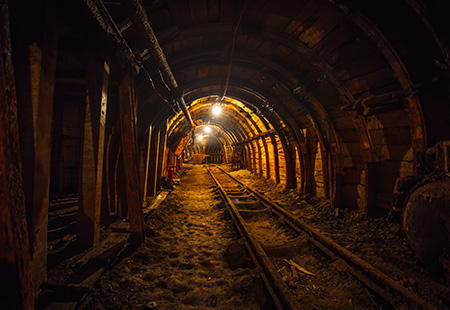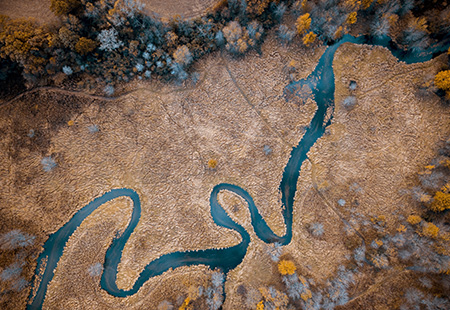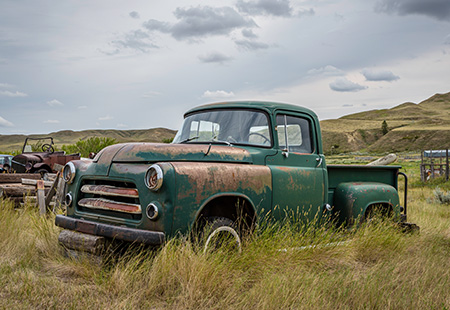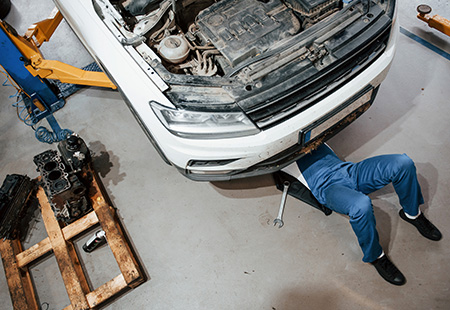In recent years, awareness of the risks of asbestos exposure has increased significantly. And thanks to this increase in awareness, there have been more legal options for people who have developed asbestos-related health conditions.
Unfortunately, most of the awareness is focused on direct exposure while downplaying second-hand and third-hand exposure. That means that while people may know the risks associated with direct exposure and take measures to protect themselves, they have little to no awareness of the harm it could do to close family and friends.
!
 Si es posible que haya estado expuesto al asbesto, hable con su proveedor de atención médica sobre pruebas y exámenes para ayudar a detectar la presencia de fibras de enfermedades relacionadas con el asbesto.
Si es posible que haya estado expuesto al asbesto, hable con su proveedor de atención médica sobre pruebas y exámenes para ayudar a detectar la presencia de fibras de enfermedades relacionadas con el asbesto.
The Risks of Asbestos Exposure
Primary Exposure / Occupational Exposure: Asbestos on the Worksite
In its naturally occurring state, asbestos is a harmless mineral. Once processed, it is applicable in a wide range of industries ranging from the construction industry to the automotive industry. That means that the risk of exposure is exponentially high not just for workers in these industries but also for people who use products made from asbestos.
Processed asbestos turns into friable and sticky microscopic fibers, which easily adhere to tissues in the body, increasing the risk of developing conditions como el mesotelioma, lung cancer, abdominal cancer, asbestosis, and cardiovascular conditions.
If you worked in an industrial occupation or worksite before 1982, you were likely exposed to asbestos fibers.
Asbestos is highly resistant to heat, pressure and corrosion, so it was used in many products, vehicles and buildings. In particular, many workplaces like fábricas, refinerías, fundiciones y astilleros involve high amounts of heat, and were built with a lot of asbestos.
People who worked in these industries or professions prior to 1982 may be at risk of developing significant health problems:
| Construcción | Fábricas | Fundiciones | Refinerías | Astilleros | Minería / Molienda |
| Demolición | Aislamiento | Trabajadores del acero | Instalación de tuberías | Construcción naval | Mecánicos |
| Techumbre | Textiles | Trabajadores del hierro | Calderas | Extinción de incendios | Reparación de frenos |
| Piso | Cemento | Electricistas | Reparación de juntas | Ferrocarril | Climatización |
Asbestos-Related Diseases take many decades to appear.
Unfortunately, these conditions have a high latency period of up to 30 years or longer. That means that most people don’t know they have developed asbestos diseases until after the condition has advanced significantly. By then, it is challenging enough to seek medical treatment, which is often expensive, let alone compensation. After such a long time, proving exposure becomes a challenge for families facing expensive bills on top of an already advanced condition. In such cases, proving second-hand or third-hand exposure is an even greater challenge than proving direct contact.


Second-hand Exposure to Asbestos
Second-hand exposure refers to instances where the families and friends of workers or people in direct contact with asbestos are indirectly exposed to fibras de asbesto. For instance, workers who have been exposed to asbestos serve as the vector for the transport and spread of these microscopic fibers into the household by way of work gear, clothing, hair, their vehicles and through other means. For this reason, second-hand exposure is known by many names.
Second hand exposure is also known as
- para-occupational exposure
- domestic exposure
- take-home exposure
- household contact
  |   |
Additionally, second-hand exposure could refer to instances where processed asbestos enters nearby environments from mining operations and other industries, and in industrial waste. This is especially the case for communities in areas close to where such industries and mines are located. The fibers can infiltrate waterways and soil, and travel long distances through the air.
  |   |
Before widespread awareness of the risks of asbestos, workers didn’t know the measures they needed to take to avoid dragging asbestos dust back to their homes. Therefore, most people working in asbestos industries before the 1970s inadvertently exposed their spouses and children to asbestos without any knowledge or intention. And it wasn’t until the 1980s that AsbestosClaims was largely phased out by the U.S. government.
Third-hand Exposure
Third-hand exposure refers to exposure through surfaces as is the case with exposure in vehicles or even on tools used regularly by an individual exposed to asbestos. Third-hand exposure can also refer to instances where asbestos dust is exposed to children or friends through the household setting.
The more asbestos dust is tracked into home, the more the household gradually develops into ground zero for third-hand exposure. It is an even greater challenge to prove third-hand exposure than to prove second-hand exposure. Imagine having been exposed while spending time renovating a friend’s garage or working on their vehicle. Proving such a case of exposure after 20 or 30 years is a complicated issue.
  |   |
What are the Legal Options for Second-hand and Third-hand Exposure?
Most victims are unaware that it is possible to get compensation for second-hand and third-hand asbestos exposure. Even with first-hand exposure, the most challenging aspect of gaining compensation is proving the exposure happened in the first place. As we’ve seen, in cases of second-hand and third-hand exposure, the difficulty in this increases exponentially.
Nevertheless, with the right legal counsel, it is not only possible to make a case, but to be victorious in the end. Litigation and asbestos bankruptcy trusts are the two main approaches to legal battles for second-hand and third-hand exposure. Let’s take a look at each in turn.
Asbestos Claims Litigation: Filing a lawsuit
Litigation involves taking direct legal action against the company involved in the lawsuit. In litigation battles, most legal teams argue negligence on behalf of a responsible party, usually a company. Contrary to popular belief, before the 1970s when the risks of asbestos became widespread knowledge, most companies were aware of the dangers of asbestos.
Unfortunately, at the time, asbestos was too profitable and there weren’t any viable alternatives yet, which led to most companies staying silent on the matter.
That makes it easier to prove negligence on their part, especially since they ignored their duty to warn. Duty to warn is a mandate which requires that a party warn others of a risk associated with creating or using a dangerous product. By failing to do that, the party can open themselves up to a lawsuit arguing negligence.
Thus, by failing to warn their workers of the risks of tracking asbestos dust home, companies inadvertently opened themselves up to lawsuits claiming second-hand and even third-hand exposure.
¿Califica usted para una compensación?
Descubra rápida y fácilmente cómo estuvo expuesto buscando en WARD, la base de datos de asbesto más grande del planeta.
BÚSQUEDA GRATUITA >Asbestos Bankruptcy Trust
Compensation for asbestos injuries without a lawsuit (no court, no deposition, no fees unless you get paid)
For most asbestos companies, once the lawsuits start rolling in, they eventually end up filing for bankruptcy. In such cases, the company is protected from asbestos lawsuits.
While an individual cannot file a lawsuit against the company after bankruptcy, the business is required to disclose its financial and liability information to a judge in the filing process. Through that information, the judge works with accounting experts to establish a fund or trust for asbestos victims.
The money in the fund depends on the company’s financial picture at the time of filing bankruptcy and how much insurance they have against lawsuits. Court-appointed trustees are then appointed to handle the resulting trust and any subsequent investments.
Proving your case with W.A.R.D., the largest asbestos info database on the planet.
Getting compensation from a trust requires a claimant to prove significant asbestos exposure within a certain timeframe (termed “statute of limitations”), but doesn’t require an actual lawsuit to be filed. Therefore, all an individual needs for second-hand and third-hand exposure compensation is qualified and experienced legal counsel to help prove their case.
The Bottom Line: Second-hand and even third-hand asbestos exposure are dangerous.
But both second-hand and third-hand asbestos exposure can often qualify for compensation from asbestos trusts, usually without having to file a lawsuit.
Second-hand and third-hand asbestos exposure are as much a risk and liability as first-hand exposure. Therefore, one is well within their legal rights to fight for compensation if they believe they’ve been harmed. However, before heading into a legal battle, it’s always best to find an experienced asbestos attorney who not only understands how best to get their clients the compensation they deserve but also how to avoid losing the claim in the first place.
AsbestosClaims.Law
Para Justinian C. Lane, obtener una indemnización por las víctimas del asbesto es algo personal.
Los abuelos de Justiniano y su padre trabajaron con asbesto en su juventud y murieron de cánceres relacionados con el asbesto en sus últimos años.
En el momento de cada una de sus muertes, nadie en la familia de Justiniano sabía que eran elegibles para presentar una demanda por asbesto y buscar una compensación de los fideicomisos de asbesto.
Debido a que nadie en la familia de Justiniano conocía sus opciones, nunca recibieron compensación alguna por la muerte de sus seres queridos.
Si cree que su lesión o la de su familiar estuvo relacionada con la exposición al asbesto, podría tener derecho a una compensación significativa.
Este es dinero que podría usar para cubrir los costos de los servicios de remoción de asbesto, pagar el tratamiento médico y proteger de manera preventiva su bienestar físico.
También hay fideicomisos de asbesto que ofrecen compensación mucho más rápida y fácilmente (sin presentar una demanda).
Si desea ayuda para presentar un reclamo, ponerse en contacto por correo electrónico a [email protected] o llámenos o envíenos un mensaje de texto al (833) 4-ASBESTOS (427-2378) o (206) 455-9190. Escucharemos su historia y le explicaremos sus opciones. Y nunca cobramos por nada a menos que reciba dinero en su bolsillo.
Además de demandas legales, discapacidad de veteranos, seguridad social y protección del empleo como compensación de trabajadores, FELA y La ley de Jones para los trabajadores marítimos, hay fideicomisos de asbesto que se han establecido para indemnizar a los perjudicados por el asbesto sin tener que presentar una demanda.
No hay riesgo ni costo para hablar con uno de nuestro personal sobre su litigio de asbesto. No hay cargos a menos que reciba dinero.
Si tiene preguntas o inquietudes adicionales relacionadas con el asbesto, visite nuestro sitio web y página de YouTube para ver videos, infografías y respuestas a sus preguntas sobre el asbesto, incluida la salud y la seguridad, prueba de asbesto, la eliminación del asbesto de su hogar y edificio, y información legal sobre la compensación por lesiones de asbesto.
Presentamos la base de datos de información sobre asbesto más grande del planeta.
W.A.R.D., que significa Worldwide Asbestos Research Database, ayuda a los clientes a reducir cuándo y dónde pueden haber estado expuestos, así como qué productos aún pueden contener asbesto.WARD también ayudará a indicar los tipos de compensación ya cuánto puede tener derecho una persona.




